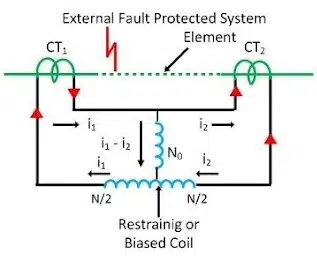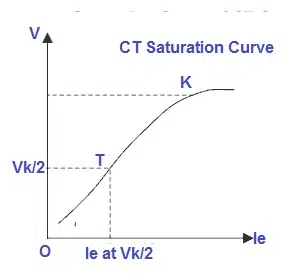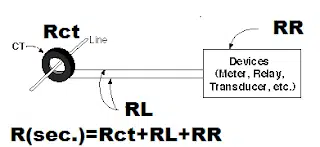What is the knee point voltage of CT?
The knee point is defined as the voltage at which a 10% increase in applied voltage increases the magnetizing current by 50%. For voltages greater than the knee point voltage, the magnetizing current increases considerably, even for small increments in voltage across the secondary terminals.
Definition of KPV according to IEC: What is the knee point?
According to IEC, the Knee Point Voltage of a Current Transformer is defined as the voltage at which a 10 % increase in voltage of CT secondary results in a 50 % increase in secondary current.

Above the knee point, the CT gets saturated. The CT knee point is an important parameter for CT selection for a particular electrical installation. The knee point indicates the CT saturation point on the magnetization or B-H curve.
Importance of Knee Point Voltage for PS class CT:
Differential protection Scheme:

The magnetizing characteristics of both LV & HV sides CTs used for differential protection must have the same knee point voltage Vk and excitation current Ie at Vk/2. If there is a variation in the knee point voltage of CTs, the CT having less knee point voltage(KPV) will get saturated in case of the external fault, and the differential protection relay will get tripped with nuisance tripping. Therefore, both the set of CTs used at the primary and secondary sides of the equipment must have the same knee point voltage and the excitation current(Ie) at Vk/2.
The Knee point voltage is selected for PS class(Differential protection) CTs at half of the knee point voltage so that the point lies in between the ankle and the knee point of the magnetization curve of the CT. The point “K” on the below-given graph is the ‘Knee Point’. The initial point of the graph is known as the ankle point of the magnetization curve of CT.

The Knee Point Voltage has significance when the CT is used for differential or REF protection.
Knee Point Voltage Calculation:
The CT knee point calculation can be done using Ohm’s Law.
According to Ohm’s law
V=I*R
R is the total resistance of the secondary of the CT.

Knee Point Voltage Formula:
CT Knee Point Voltage can be calculated using the formula;
Vkp = K * If/CTR * (RCT + RL + RR)
Where,
K = Constant, conventionally taken as 2.0
Vkp = The minimum Knee Point Voltage
If = Maximum Fault Current at the location, in Amperes
CTR = CT Ratio
RCT = CT Secondary Winding Resistance, in Ohms
RL = 2-way Lead Resistance in Ohms
RR = Relay Burden, in Ohms


Example:
If the system fault current is 30 KA, CTR-600/5, RCT+RL+RR=0.5 Ohm
Knee point voltage of the current transformer is;
Vkp = K * If/CTR * (RCT + RL + RR)
Vkp = 2*30000/120*0.5 =250 Volt
Based on the above calculation, check the rated knee point voltage of CT. Suppose the knee point voltage calculated based on the power network is higher than the specified knee point voltage of CT. In that case, there is a chance of CT saturation during a fault in the power network, and the protection relay will not operate.
How to Check the Knee Point Voltage of the CT?
The current transformer of the PS class can be tested for whether or not the CT has the knee point voltage as per the manufacturer’s specifications. The test procedure is straightforward and can be done if the variable voltage source is available.
Test Set-up:

Test Procedure for Knee point Voltage Calculation of CT :
- Disconnect the CT from all external connection
- Note down the knee point voltage of CT ( as per the datasheet of the CT).
- Apply 5-10 % voltage of the knee point voltage to the secondary of the CT by auto-transformer. Note down the secondary current.
- Increase the voltage gradually to 20,30,40,50,60,70,80,90 % of the rated knee point of the CT and note down the secondary current.
- Now increase the voltage to 100% of KPV and note down the current.
- Increase the voltage above 110% of KPV and observe the increase in the secondary current. If the secondary current increase is 50% with an increase in this 10% voltage. The Knee point voltage of the CT is the voltage as per step No.5.
Test Results :
This is the sample of the test results of the knee point calculation.

Read Next:
Insightful and informative article.
how does Rct of CT influence the Vkp ? If higher Vkp is required, the Rct value shall be increase as well ?
Very good.
Brief and useful.
Thanks a lot.